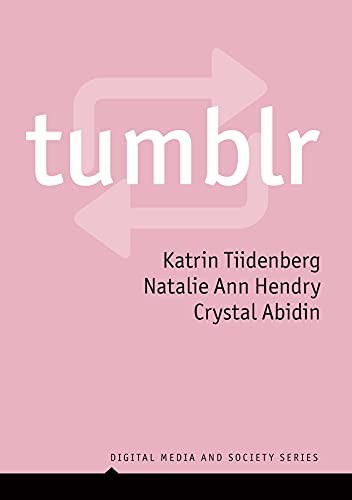Jim Brown reviewed Tumblr by Katrin Tiidenberg
Silosociality
I was not a big tumblr user - tinkered here and there. This book is a great account of tumblr's technical affordances as well as its cultural significance. It's written by insiders, which I think brings a lot to the analysis. I read it for research on federated/decentralized networks, and that meant I was most drawn to their concept of "silosociality."
The authors argue that tumblr has a shared sensibility, oriented toward social justice and creating "safe space." They describe that sensibility in terms of silosociality, which involved the maintenance of boundaries that is not always creating cozy, happy places. There's a toxic side to it. Still, even with that toxicity, silosociality need not always be demonized - it's a different way of thinking about how we gather (online or offline).
"Tumblr users experience tumblr in silos that are defined by people's shared interests, but sustained through inward-facing shared vernacular …
I was not a big tumblr user - tinkered here and there. This book is a great account of tumblr's technical affordances as well as its cultural significance. It's written by insiders, which I think brings a lot to the analysis. I read it for research on federated/decentralized networks, and that meant I was most drawn to their concept of "silosociality."
The authors argue that tumblr has a shared sensibility, oriented toward social justice and creating "safe space." They describe that sensibility in terms of silosociality, which involved the maintenance of boundaries that is not always creating cozy, happy places. There's a toxic side to it. Still, even with that toxicity, silosociality need not always be demonized - it's a different way of thinking about how we gather (online or offline).
"Tumblr users experience tumblr in silos that are defined by people's shared interests, but sustained through inward-facing shared vernacular and sensibility, made possible by tumblr's features, functions, and rules." (52)
Navigating, learning, and becoming part of silos - this is hard. That's what drives some people away. But that friction is interesting and sometimes useful. Current discourse is allergic to silos and echo chambers (even as people flee to these kinds of set ups - group chats, private messaging apps) but that discourse is (to my mind) driven by corporate social media companies that want you to post more, and more, and more so they can mine the data. They can, obviously still data mine private messages. But their business model would have to change if people thought more about cultivating their silos and then moving between them (or looking for ways to manage the connections between their silos).
At any rate, this concept of silosociality is really interesting, and the authors suggest in the conclusion that it might be a way of thinking through the futures of social media.

